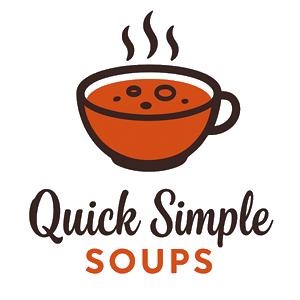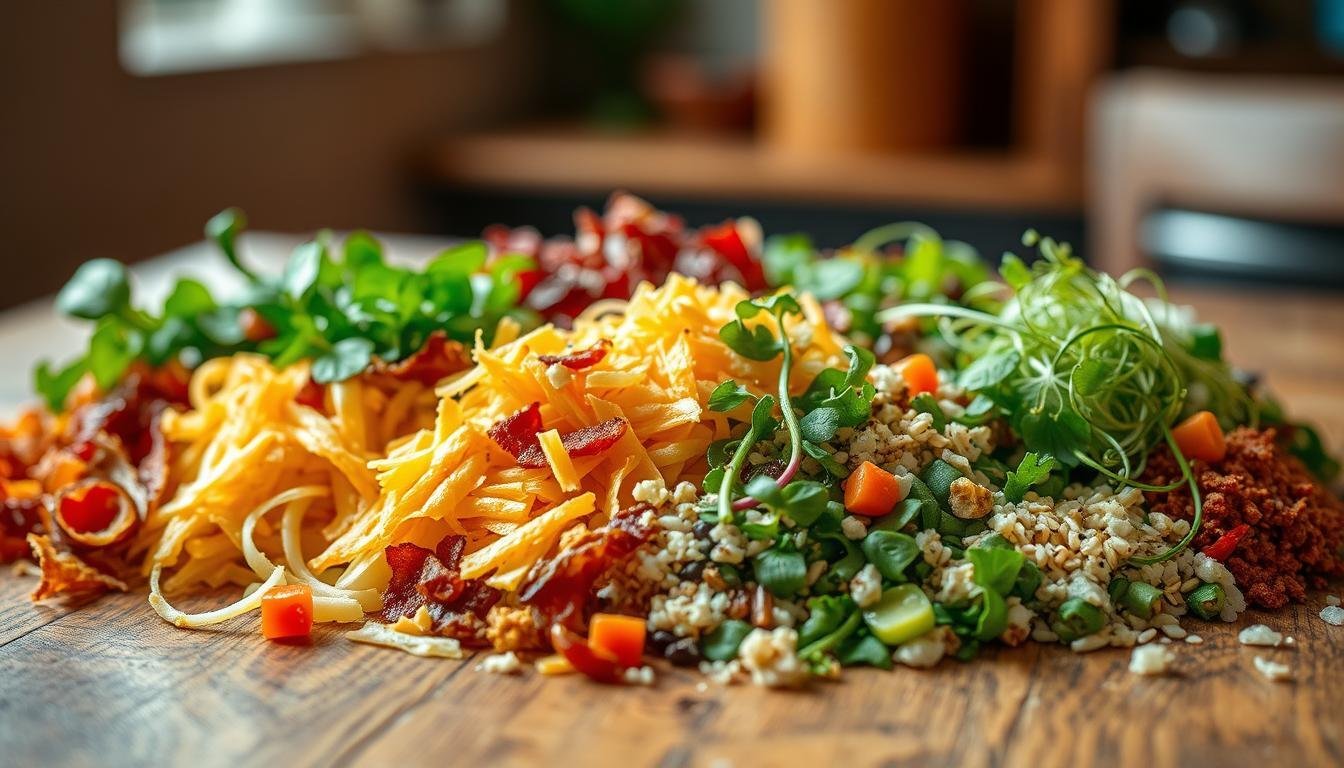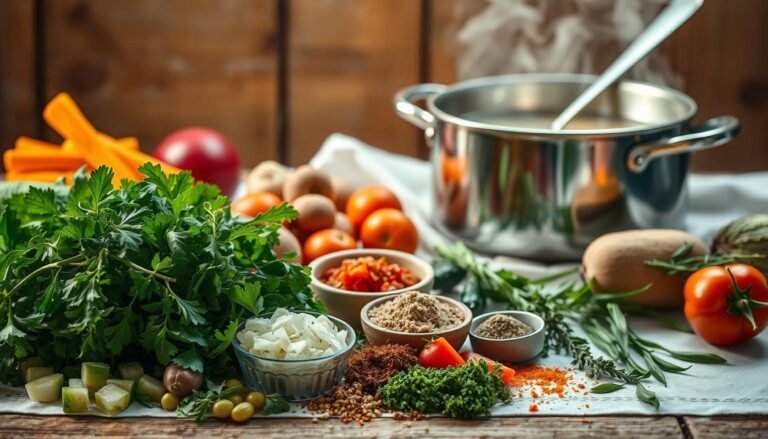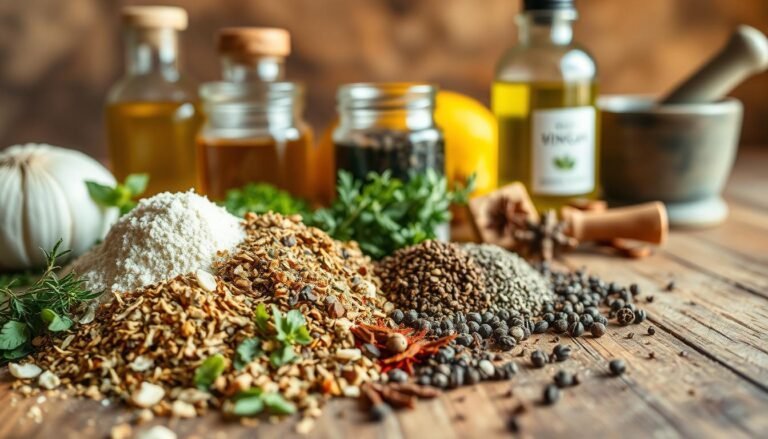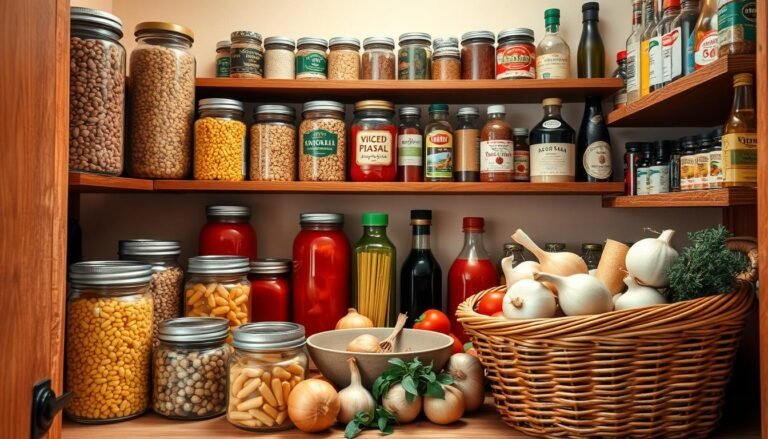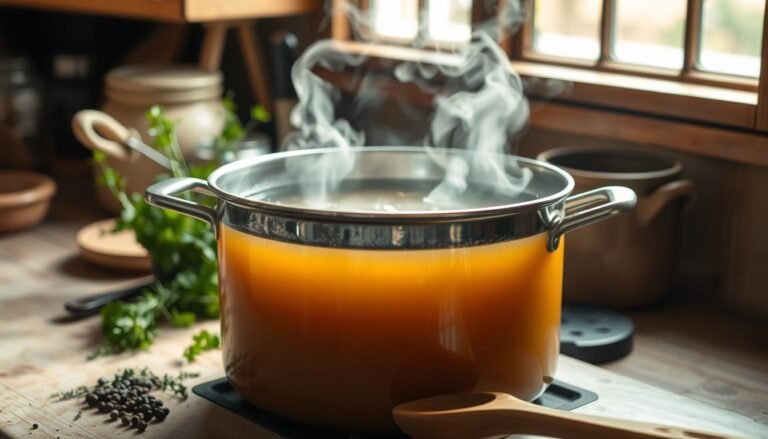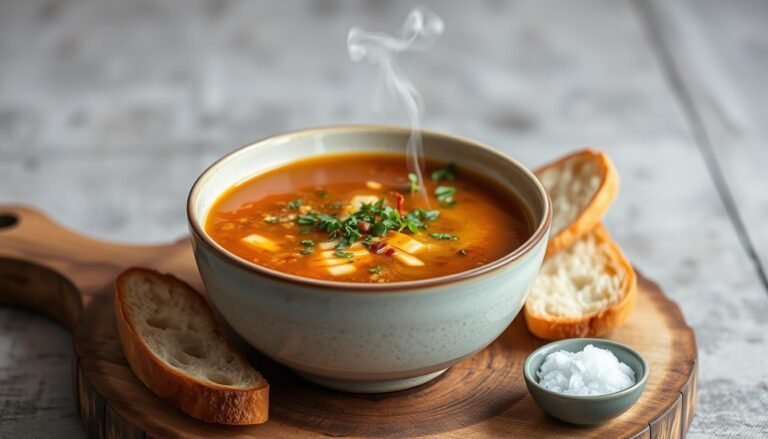Disclosure: This Post Contains Affiliate Links; We earn a commission on purchases.
Adding the right toppings to a soup can make it taste better and feel more satisfying. You can use different garnishes to make your soup more interesting. Experts at Epicurious say that toppings like toasted seeds and nuts add crunch. Dairy or non-dairy toppings, like yogurt and avocado, make it creamy.
Fresh herbs and acidic ingredients can make a soup brighter. Fermented and pickled items add a lot of flavor. Adding proteins like roasted mushrooms and tofu can also make soups more filling.
Key Takeaways
- Add texture with toasted seeds and nuts
- Enhance creaminess with dairy or non-dairy toppings
- Brighten up soups with fresh herbs and acidic ingredients
- Add a burst of flavor with fermented and pickled items
- Make soups more filling with proteins like roasted mushrooms and tofu
The Power of Soup Toppings
Soup toppings are more than just a garnish. They’re a game-changer for flavor and texture. The right toppings can turn a simple soup into a masterpiece.
Adding toppings can make a meal better by changing the texture and flavor. It’s not just about any topping. It’s about picking ones that match the soup’s taste.
How Toppings Transform Basic Soups
Toppings can make a basic soup more interesting. They add a new layer to the dish. Here are some ways to do it:
- Adding crunchy elements like nuts or croutons
- Incorporating fresh herbs for a burst of flavor
- Using dairy or non-dairy creamy elements to enhance richness
The Science of Texture Contrasts
Texture contrasts are key to a great meal. Mixing smooth and crunchy or soft and crispy textures excites the taste buds. It makes the dish more complex and enjoyable.
Crunchy Elements That Elevate Your Soup
Crunchy elements are the unsung heroes of soup toppings. They add depth and complexity to what might be bland. Adding crunchy textures can turn a basic soup into a delightful experience.
Toasted Nuts and Seeds
Toasted nuts and seeds are a simple yet effective way to add crunch. Almonds, pumpkin seeds, and sunflower seeds provide a satisfying texture. They also add nutty flavors that complement many soups.
Preparation Techniques for Maximum Crunch
To get the most crunch from nuts and seeds, toast them properly. Spread them on a baking sheet and toast in a dry skillet or oven until golden brown. This brings out their natural flavors and textures, making them perfect for soups like creamy tomato or butternut squash.
Artisanal Croutons and Breadcrumbs
Artisanal croutons and breadcrumbs add a traditional crunch to soups. Made from artisanal breads, they can be seasoned with herbs and spices to match your soup’s flavor.
Beyond Basic Bread: Unique Crouton Flavors
Try unique crouton flavors by using different breads or adding seasonings. For example, croutons from sourdough bread with garlic and parmesan can add a rich, savory taste to soups.
Crispy Vegetable and Protein Garnishes
Crispy vegetable and protein garnishes add another layer of crunch and flavor. Fried shallots and bacon crumbles can add a satisfying crunch and a burst of flavor to your soup.
From Fried Shallots to Bacon Crumbles
Adding fried shallots or crispy bacon to soups adds texture and flavor. These elements not only add crunch but also introduce a savory, umami taste. This enhances the overall flavor of the soup.
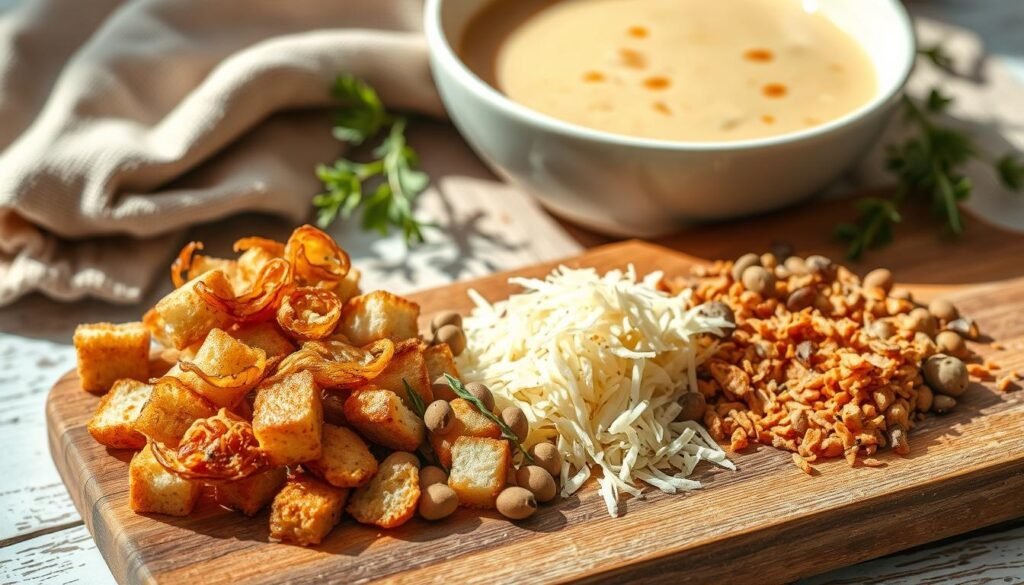
- Toasted almonds for creamy broths
- Artisanal croutons for French onion soup
- Fried shallots for roasted vegetable soups
- Bacon crumbles for creamy potato soup
By adding these crunchy elements, you can turn simple soups into engaging culinary experiences.
Creamy and Rich Additions
Creamy toppings make your soup special. They add flavor and make it more fun to eat.
Dairy-Based Toppings
Dairy toppings make soups creamy. Crème fraîche, yogurt, and cheese are great for flavor.
Crème Fraîche, Yogurt, and Cheese Options
Crème fraîche is tangy. Yogurt is cool. Cheese adds savory taste. Try:
- Sour cream or crème fraîche for tanginess
- Plain or flavored yogurt for protein
- Grated Parmesan or crumbled feta for saltiness
Non-Dairy Creamy Alternatives
Non-dairy options are tasty and creamy. Coconut cream, nut-based swirls, and avocado are good choices.
Coconut Cream, Nut-Based Swirls, and Avocado
Coconut cream is velvety. Nut-based swirls are creamy. Avocado is smooth. Use:
- Coconut cream for dairy-free richness
- Cashew or almond-based creams for nutty taste
- Mashed or sliced avocado for creaminess
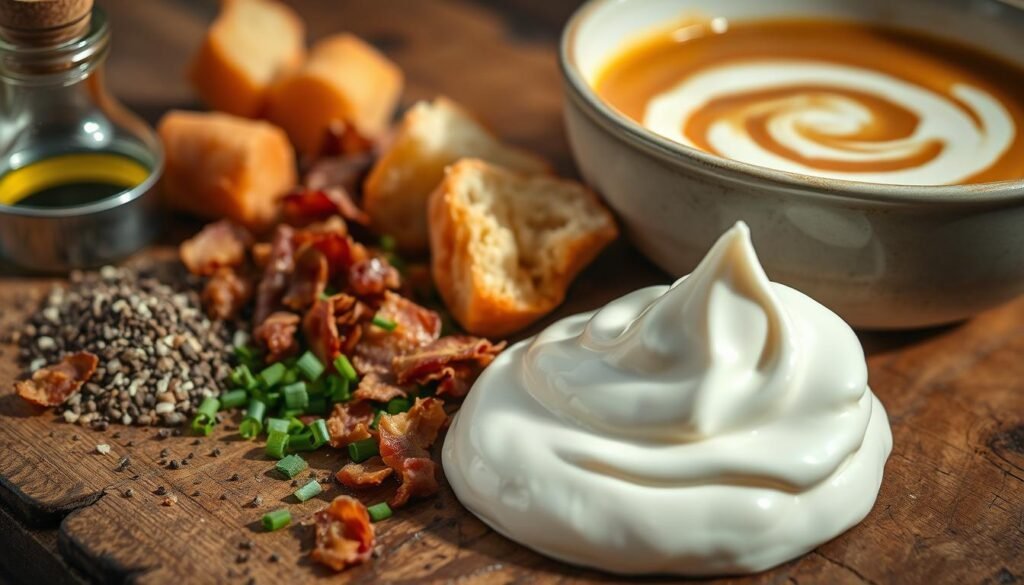
Flavor-Infused Oils and Drizzles
Flavor oils and drizzles add luxury. Herb oils, chili oils, and balsamic reductions are tasty.
Herb Oils, Chili Oils, and Balsamic Reductions
Herb oils are aromatic. Chili oils are spicy. Balsamic reductions are sweet and tangy. Try:
- Infusing oils with herbs like basil or rosemary
- Using chili oil for spice
- Drizzling balsamic reduction for sweetness
Fresh Herbs and Vegetable Garnishes
Fresh herbs and creative vegetable garnishes can make a simple soup special. They add flavor, texture, and beauty to your soups.
Aromatic Herbs for Different Soup Styles
Aromatic herbs are key to making soups taste better. The right herb can match the soup’s style perfectly.
Pairing Guide: Which Herbs for Which Soups
For creamy soups, parsley and chives are great. They add a fresh taste. Clear soups benefit from herbs like basil or dill. They enhance the broth without being too strong.
Robust soups can handle herbs like thyme or rosemary. These herbs add a strong flavor.
- Parsley: Pairs well with creamy soups and adds freshness.
- Basil: Complements tomato-based soups and adds a sweet note.
- Thyme: Works well with hearty, savory soups.
Microgreens, Sprouts, and Edible Flowers
Microgreens, sprouts, and edible flowers add color and flavor to soups.
Adding Visual Appeal and Subtle Flavors
Microgreens like pea shoots or radish greens add flavor. Edible flowers like nasturtiums or violas add a whimsical touch. Sprouts add crunch.
Quick-Pickled and Fermented Vegetables
Quick-pickled and fermented vegetables add a tangy flavor to soups. They balance out the richness.
Adding Acidity and Brightness to Rich Soups
Quick-pickling vegetables like cucumbers or carrots add crunch. Fermented vegetables like sauerkraut add umami flavor. These elements balance creamy soups.
- Quick-Pickled Cucumbers: Add a refreshing twist to creamy soups.
- Sauerkraut: Brings a tangy, umami flavor to savory soups.
Creative Soup Toppings for Texture and Taste Combinations
Creative soup toppings can change a simple soup into a special dish. They add flavor and texture, whether it’s hot or cold. The right toppings can make a big difference.
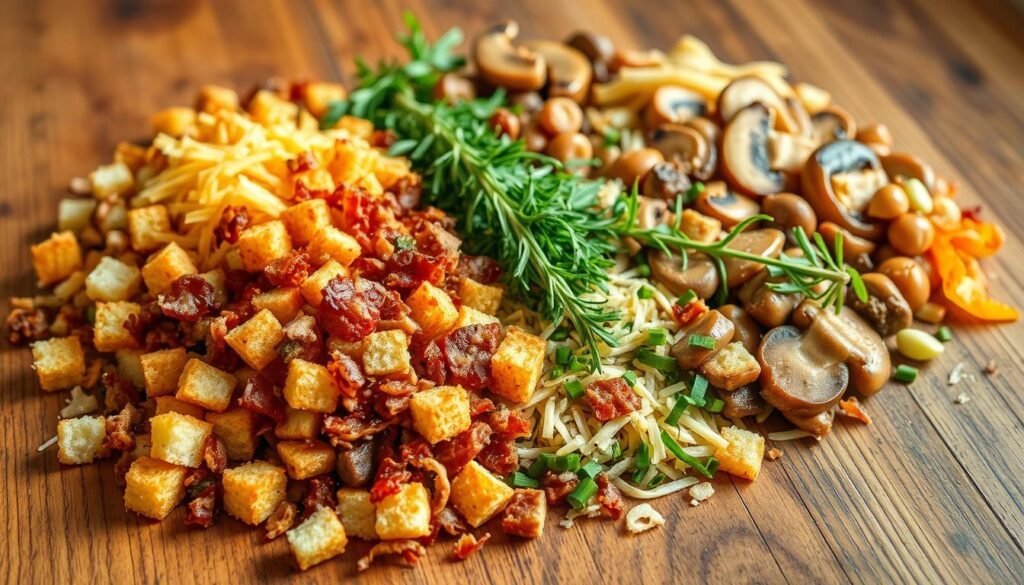
Hot Soup Topping Strategies
For hot soups, mix flavors and textures well. Add crunchy elements like toasted nuts or crispy croutons. They contrast with the smooth soup base.
Temperature and Timing Considerations
When to add toppings is important. Add delicate herbs just before serving. This keeps their flavor and aroma fresh.
- Use toasted nuts or seeds for added crunch.
- Add a swirl of flavored oil or cream for richness.
- Incorporate crispy protein like bacon or prosciutto for texture.
Cold Soup Garnishing Techniques
Cold soups like gazpacho or cucumber soup are perfect for toppings. Refreshing additions include diced fruits, chopped herbs, or yogurt.
Refreshing Additions for Summer Soups
Summer soups need cool toppings. Think diced cucumbers or mint.
- Diced fruits like watermelon or apples.
- Chopped fresh herbs like basil or dill.
- A dollop of yogurt or sour cream.
Global Topping Inspirations
Global cuisines offer unique topping ideas. Mexican tortilla soup gets crispy tortilla strips. Japanese ramen has soft-boiled eggs and green onions.
From Mexican Tortilla Soup to Japanese Ramen
Exploring global cuisines can spark new topping ideas. Look at the flavors and ingredients used in different cultures. This can lead to unique soup toppings.
- Crispy tortilla strips for a Mexican twist.
- Soft-boiled eggs and green onions for a Japanese-inspired ramen.
- Crushed sumac or paprika for a Middle Eastern flavor.
Conclusion: Elevating Your Soup Game
Creative soup toppings can make soups much better. They turn a simple meal into a special treat. Adding crunchy, creamy, and fresh elements can make your soup stand out.
The secret to a great soup is mixing flavors and textures well. Try using toasted nuts, artisanal croutons, and oils with flavor. These toppings add depth to your soups, whether they’re hot or cold.
Using Creative Soup Toppings can improve your soup-making skills. It makes every meal more enjoyable and exciting.
FAQ
What are some popular crunchy elements that can be used as soup toppings?
How can I add a creamy touch to my soups without using dairy products?
What are some fresh herbs that pair well with different soup styles?
Can I use microgreens as a soup topping, and what are the benefits?
How can I create unique flavor combinations with soup toppings?
Are there any specific soup topping strategies for hot versus cold soups?
Can I make my own soup toppings at home, such as croutons or flavor-infused oils?
What are some unique soup topping ideas that can add a luxurious touch to my soups?

Ryan Conlon is the comfort food fan behind QuickSimpleSoups.com, where he shares easy soup ideas, smart shortcuts, and helpful tips for busy home cooks. Ryan believes a good bowl of soup doesn’t need to be complicated—and he’s here to prove it. Whether you’re looking for quick weeknight meals or cozy classics with a twist, Ryan’s simple approach helps you serve up satisfying soups with minimal effort.
Subscribe to Our Newsletter
